Need fresh ideas for brand growth?
Subscribe to free insight emails
[Guide] Healthcare Branding
February 5, 2024

Healthcare Branding: A Radiant Marketing Guide
Guide Sections:
- Introduction to Healthcare Branding / Fundamentals
- Healthcare Branding Uniquenesses
- Elements of a Successful Brand
- Creating a Lasting Brand
- Benefits of Effective Branding
- Auditing & Optimizing Your Brand
- Healthcare Branding Agencies
>> Download the PDF here to read later! <<
Section 1: Introduction to Healthcare Branding: The Fundamentals
In this guide, we will cover exactly what branding in healthcare is, the elements of a successful brand, the benefits of effective branding, our top tips and practices for creating a lasting brand, ways to audit & optimize your brand, and more.
You’ll walk away with a better understanding of why strategic and intentional branding is crucial for your business, how it can increase your revenue and impact, and ways to make immediate and long-term upgrades to your branding.
Strong branding is the cohesive thread that weaves through every interaction, forging a meaningful relationship with your ideal audience. As we guide you through the intricacies of branding in the healthcare space, our commitment is to not only enhance the visibility of your brand but to elevate its essence, ensuring it leaves an indelible mark on the hearts and minds of those you serve.
This comprehensive guide will walk you through the fundamentals of healthcare branding, providing you with the knowledge and tools necessary to elevate your brand’s impact and revenue.
When it comes to healthcare branding, it’s not just about logos and slogans—it’s about people’s health and trust. Unlike branding in various industries, healthcare branding involves higher stakes and ethical responsibilities.
In healthcare branding, it’s crucial to understand the sensitivity of health-related decisions. The brand story should convey reliability, but also a deep commitment to patient care and ethical standards. Healthcare brands must also navigate additional complexities like patient privacy regulations.
Effective healthcare branding requires a specialized and careful approach, considering the unique aspects of health, ethics, and regulations. It’s about ethically building trust and demonstrating a commitment to your community’s well-being.
A few of the unique aspects present in healthcare branding:
Regulatory Compliance: The healthcare industry is highly regulated, with strict rules and guidelines governing advertising and marketing practices, companies must navigate these regulations while conveying a compelling and trustworth image. Regulations include patient privacy (HIPAA) and health claims, and can influence everything from the copy on your website and images on social media to the ads you’re running on Google.
For example, in order to prevent misleading or false medical information, Google Ads1 will prevent users from including specific result-focused claims that aren’t backed with factual support.
| The Mayo Clinic’s digital platform is a perfect example of this. The platform provides ADA-compliant online health resources, approved patient imagery and avoids any blanket health or treatment claims. |
Complex Services: Healthcare services are often intricate, requiring a high level of expertise to understand and communicate effectively. Brand communications must simplify these services for the audience while preserving their importance and credibility.
| Khan Academy Medicine utilizes its YouTube channel to simplify complex medical concepts through educational videos. The brand communicates intricate healthcare services by breaking down information into digestible and engaging content. |
Patient-Centric: Healthcare branding should be inherently patient-centric. Rather than promoting services first; it’s important to highlight the patient as the hero, demonstrating a clear understanding of the sensitive nature of the ideal audience’s health needs, and in turn creating an empathetic and supportive environment for those seeking care and solutions.
| St. Jude Children’s Research Hospital places the young patients and their families at the center of its branding. The hospital’s brand messaging is emotionally resonant, showcasing stories of courage and hope while creating a supportive community for families facing challenging health situations. |
Explore the following key components to elevate your patient-centric branding:
-
- Focusing on the Patient Experience – Transform your healthcare brand by prioritizing the patient experience. M.D. Thomas First stated that if you “Take care of the patient first and everything else will follow22”. This is why it’s crucial that from the first point of contact to ongoing care, your organization creates a seamless journey that places the patient’s well-being at the forefront.
- Empathy and Compassion in Branding – Infuse your brand with a genuine sense of empathy and compassion. Explore ways to authentically convey these qualities in your branding, fostering a deeper connection with patients21. By showcasing the human side of healthcare, you create an environment where patients feel understood and supported.
- Strategies for Building Trust with Patients – Trust is the bedrock of successful healthcare relationships. Delve into effective strategies for building and maintaining trust with patients from transparent communication to consistently delivering high-quality care.
Personal/Private Aspect of Healthcare: Health care covers a wide array of conditions and treatments, some that may be particularly private or challenging to discuss openly. For these conditions especially, incorporating light and tasteful humor and frankness into the messaging can play a crucial role in overcoming negative emotions. By approaching ‘hard to have’ conversations with a touch of humor and openness, the brand not only destigmatizes these topics but also makes individuals feel more comfortable addressing and seeking solutions for conditions that might otherwise be difficult to discuss openly.2
| Hims / Hers recognizes that individuals seeking healthcare solutions are navigating personal and often sensitive health concerns. By framing the patient as the hero, and incorporating a touch of humor and candidness, Hims / Hers communicates empathy, understanding, and a commitment to supporting individuals on their health journey. |
HIPAA and Healthcare Branding: The Health Insurance Portability and Accountability Act (HIPAA) sets stringent standards for safeguarding patient information, underscoring the critical importance of privacy and confidentiality in the healthcare sector. In the realm of healthcare branding, where communication is paramount, a comprehensive understanding and strict adherence to HIPAA regulations become imperative. This is particularly crucial when incorporating client or patient results into branding strategies.
Healthcare brands showcasing client or patient results or wishing to provide personalized communication based on diagnosis, intent, etc must adopt a tailored tech stack designed to safeguard sensitive data. This involves implementing secure HIPAA-compliant systems, such as encrypted email marketing platforms3.
| As a telemedicine platform, Doxy.me’s emphasis on privacy and security as a core brand value increases prospect’s trust in the brand and helps to drive new patient acquisition. |
A. Significance of Strong Branding
In the words of Steve Jobs, the essence of a brand lies in the foundation of trust. As he aptly put it, “A brand is simply trust.” This profound statement encapsulates the fundamental truth that without the bedrock of trust and loyalty from consumers, a brand remains nothing more than an expression. Establishing and nurturing trust is a pivotal aspect of developing a strong brand, as it forms the basis of a lasting and meaningful connection with an audience.
Key reasons a strong brand is important:
Differentiation: A well-defined brand helps you stand out in a crowded market. It distinguishes you from competitors and clarifies what makes your healthcare business special.
| Oscar Health differentiates itself through a tech-driven, member-focused health insurance model. The emphasis on user-friendly digital tools and personalized member experiences sets it apart in the over-saturated insurance sector. |
Trust and Credibility: Trust is at the core of both healthcare branding and healthcare itself. A strong brand fosters trust among patients and clients, assuring them of the quality and reliability of your services. Research shows that companies earn customers’ respect and loyalty when their brands enable, entice, and enrich them.5
| Northwell Health’s emphasis on community health initiatives, medical education, and factual research enhances trust by demonstrating a commitment to enriching overall well-being. This multifaceted approach earns respect and loyalty from patients. |
Recognition: A consistent brand experience across all touchpoints instills confidence and recognition in your audience. It ensures that your message is clear, unwavering, and easily recognized.
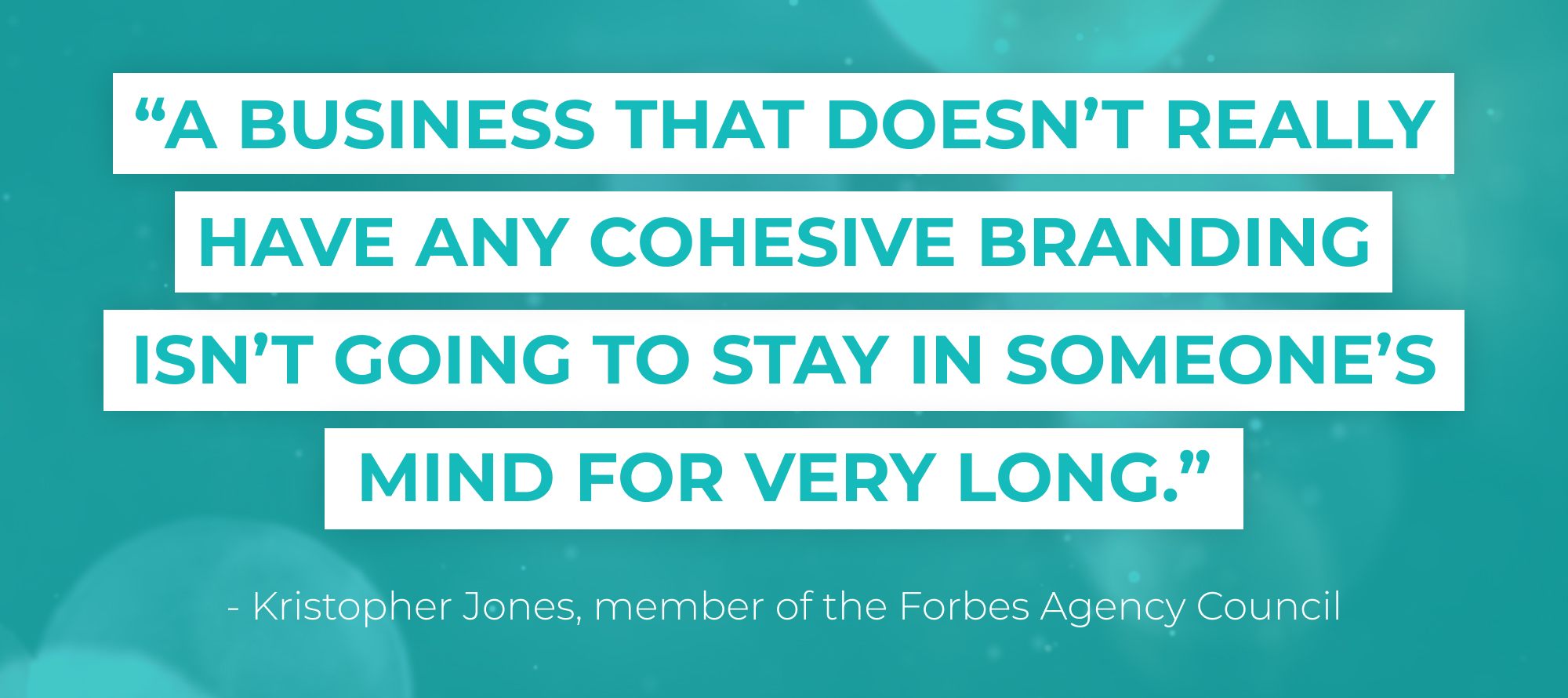
Improved Patient Experience: A robust healthcare brand extends beyond marketing to influence patient experiences. It sets the tone for interactions, making them more personal and compassionate.
| MD Anderson Cancer Center has focused extensively on improving the patient experience. They have redesigned clinic spaces to be more calming and welcoming, with natural light, green spaces outside windows, soft music, and warm decor. Doctors, nurses, and all staff have undergone customer service and empathy training to make interactions with patients more compassionate. |
B. Overcoming (Embracing) the Private Aspect of Health
It’s no secret that health is deeply personal. Patients and clients entrust their well-being to healthcare providers and organizations.
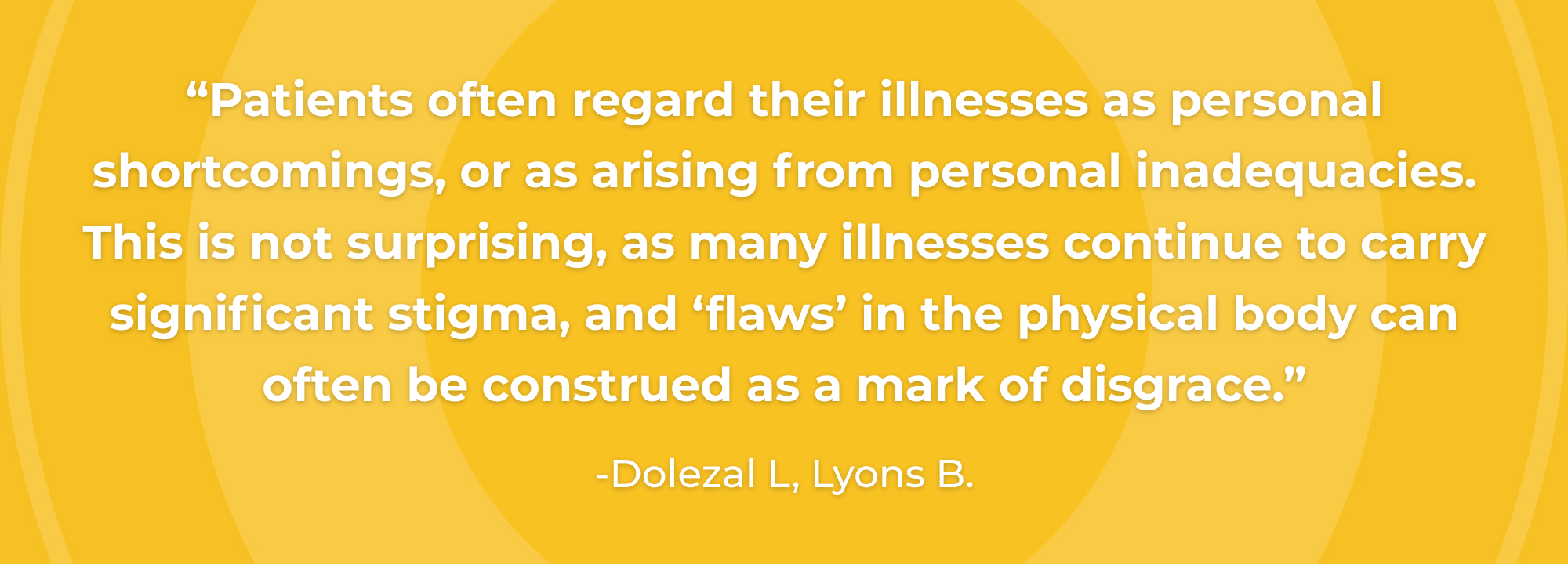
Shame associated with health conditions can deter individuals from seeking solutions, due to intense negative emotions surrounding health shortcomings.
Effective healthcare branding should acknowledge these emotions and stigmas associated with health by:
Respecting Privacy: Effective healthcare branding respects the privacy and sensitivity of health-related information. It ensures that patients feel secure and protected throughout their journey. Some aspects of healthcare fall under Protected Health Information (PHI) (also referred to as personal health information). PHI can include certain demographic information, medical histories, test and laboratory results, mental health conditions, insurance information, and other data that a healthcare professional collects to identify an individual and determine appropriate care.2
| The Mayo Clinic, for example, has very strict policies and processes in place to protect patient privacy and the sensitivity of health information. Patient charts are kept secure, online portals require complex passwords, conference rooms have noise machines when sensitive discussions occur, and anonymity is used for case reviews. Essentially, data access is limited to only what is necessary to treat each individual patient, exemplifying the brand’s commitment to respecting privacy. |
Empathy and Compassion: A strong healthcare brand conveys empathy and compassion in every interaction, understanding that healthcare decisions are emotional and often life-changing.
| Memorial Sloan Kettering Cancer Center has reenvisioned the patient experience to provide empathy-focused care. Their brand conveys a deep understanding that a cancer diagnosis causes fear, anxiety and emotional turmoil. They’ve updated their facilities to feel warm, tranquil and inspiring rather than clinical. Practical amenities like healthy meals, relaxation classes, hotel accommodations and transportation ease day-to-day burdens during treatment. |
C. Social and Economic Influences
The healthcare industry is intricately connected to social and economic factors.
Effective branding in healthcare acknowledges these influences through:
Community Engagement: Healthcare businesses play a vital role in communities. A strong brand can be a catalyst for positive community engagement, addressing local healthcare needs and concerns.
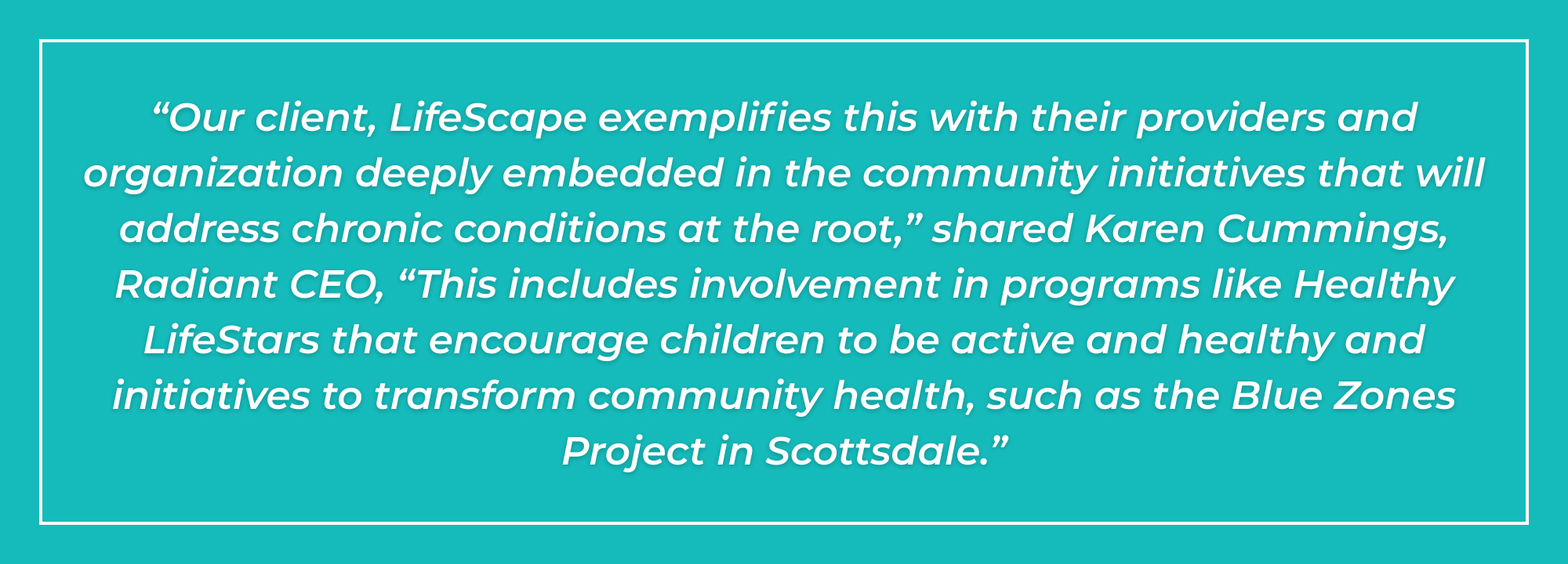
Economic Impact: Effective healthcare branding must acknowledge the major economic burdens associated with healthcare costs, lack of access, and confusing insurance plans. Patients face anxiety around deciphering hospital bills, managing prescription drug costs, and finding care they can afford. A compassionate healthcare brand should convey effort and innovation around improving accessibility and affordability.7
| Houston Methodist makes economic considerations core to their brand strategy. Their marketing conveys price transparency for common procedures and preventative care services, while helplines and online resources provide cost estimation tools. This allows potential patients to budget and consider affordable options. |
Section 3: Elements of a Successful Brand
A. Healthcare Branding: Trust, Values & Audience
We’ve already established that trust is undoubtedly the foundation of healthcare branding. However, trust is a collection of numerous factors and a collection of core values that allow patients and clients to have faith in your brand for their well-being.
Trust factors include:
-
- Professionalism: Demonstrating expertise, competence, and ethical conduct in all aspects of your healthcare services.
- Transparency: Open and honest communication about your services, pricing, and treatment options.
- Reliability: Consistently delivering high-quality care and services, meeting or exceeding patient expectations.
- Patient Testimonials and Reviews: Real-life experiences from satisfied patients can reinforce trust in your brand. NRC Health reports that 74.7% of patients want to see at least seven ratings before they’ll trust a provider.8
C. Defining, Sharing & Living Your Brand Values
Every successful health brand, regardless of its size or history, originates from a fundamental desire to create positive change within the healthcare landscape, this is encompassed in their brand values. Elements of a Successful Brand
![“[Brand values are] deeply ingrained principles that guide all of a company’s actions; they serve as its cultural cornerstones. They are the source of a company’s distinctiveness and must be maintained at all costs.” - Harvard Business Review](https://radiantmarketingaz.com/wp-content/uploads/2024/02/Brand-values-are-deeply-ingrained-principles.jpg)
To authentically identify your brand values, delve beyond commonplace phrases like ‘quality service’ or ‘we care’ or ‘reliable’. Dive deeper to get to the root of what makes your brand unique – something that competitors cannot also claim.
Articulate your values more precisely, but also establish a foundation for a brand that stands out by being true to its principles. It can be obvious when a brand’s values don’t align with the actual corporate and company culture.
Erin Myers, professor at INSEAD, warns of this lack of authenticity, stating “Corporate culture can be a mushy marshland of vague language and incomplete, ambiguous definitions. What’s worse, company values — as articulated — rarely match the way people behave in reality11.”
D. Design Branding to Appeal to Your Ideal Audience
Building a successful brand in the healthcare space starts with a deep understanding of your target audience. By identifying and connecting with the right audience, you can create a brand that resonates and drives meaningful engagement.12

Consider these steps to effectively define your ideal healthcare audience:
Analyze Your Customer Base
Begin by examining your existing customer base. Analyze demographics, preferences, and behaviors. Look at your most loyal customers and understand what drives their loyalty.
Typically organizations that conduct customer analysis use a variety of methods to do so. These methods include analyzing first-party data (such as CRM or marketing data), focus groups, interviews, existing customer feedback, and more.13
E. Be Mindful of Specific Branding for Niche Wellness Practices
In the diverse landscape of healthcare, success lies in understanding and catering to specific niches.
Embracing the unique challenges and opportunities presented by specific wellness niches is vital for brand success. Whether it’s holistic medicine, mental health, or fitness, you should be mindful of the intricacies that come with tailoring your brand to resonate with the specific needs and values of distinct audience segments.
Radiant client, Hot Elevation Studios tailors their branding to resonate with their audience of fitness lovers by sharing motivational quotes and health and fitness quotes that encourage engagement and a sense of community.
Conduct Market Research and Identify Industry Trends
Stay ahead of the curve by consistently evaluating the market. Explore industry trends, consumer preferences, and emerging technologies and competitors. Market research blends consumer behavior and economic trends to confirm and improve your business idea. Staying informed with these trends empowers you with information on the opportunities that will most impact your profits14.
Analyze Competitors
Study your competitors to understand their target audience and market positioning. Identify gaps or areas where your brand can offer a unique value proposition. Keeping your finger on the competitive pulse and practicing competitive intelligence can strategically improve your market positioning15.
Create Personas
Develop detailed buyer personas representing your ideal customers. These personas should encapsulate the demographics, behaviors, and motivations of your target audience. Personas provide a human touch to your marketing efforts, making it easier to tailor messages that resonate with specific segments of your audience16.
Define Who Your Target Audience Isn’t
Equally important is understanding who your brand is not targeting. By clearly defining exclusions, you prevent resources from being wasted on irrelevant segments. This focused approach ensures your marketing efforts are directed toward those most likely to benefit from and engage with your brand.
Build the Best Tech Stack
Leverage powerful tools like Google Analytics to gather data on website traffic, user behavior, and demographics. These tools provide valuable insights and data into the effectiveness of your current strategies and help in refining your approach. Most marketers agree that having high-quality data on their target audience is important to succeeding in their role.12
Section 4: Creating a Lasting Brand
A. Clarify Your Brand Essence
Brand essence, as defined by Radiant, is the intrinsic nature of your brand—the core essence that encapsulates its purpose, values, and unique character. It delves into the emotional and experiential aspects that make your brand memorable and resonate with your audience.
Your brand essence serves as the compass guiding your content strategy. It shapes the tone, messaging, and overall communication approach. When you clarify and define your brand essence, you’re identifying the fundamental elements that make your brand authentic, unique and appealing.
This brand essence clarity empowers your content strategy by:
Creating consistency: Ensure a consistent message across all platforms and content types, reinforcing the core values that define your brand.
| Cleveland Clinic is diligent about maintaining brand consistency across their massive health system which includes multiple hospitals, facilities, research centers and online portals. Their main slogan “Every Life Deserves World Class Care” appears prominently on websites, brochures, signage, uniforms and clinic spaces. |
Establishing relevance: Tailor content to align with the emotional and aspirational aspects of your brand essence, making it more relatable and engaging for your target audience.
| Shriners Hospitals for Children generates branded content centered on emotional storytelling to establish relevance for its target audience of families needing specialized pediatric care. Their website and social campaigns primarily feature real patient stories from children who have received life-changing orthopedic or burn care from Shriners. |
Solidifying differentiation: Set your brand apart from competitors by emphasizing the unique qualities that define your essence, creating a distinct and memorable brand identity.
| MD Anderson Cancer Center has established a distinct brand identity that sets them apart in the competitive cancer care space through emphasizing their differentiating focus on research-driven personalized treatment plans. Their marketing creatively conveys the theme “Make Cancer History” – positioning MD Anderson uniquely as the institution at the forefront of scientific discovery. |
Connection: Foster a deeper connection with your audience by aligning your content with the emotional resonance of your brand essence, creating a lasting impact.
| St. Jude Children’s Research Hospital aligns content to resonate emotionally with its audience of families dealing with a child’s catastrophic diagnosis. The content strategy powerfully conveys the essence of hope and determination to fuel human spirit even in the darkest times. |
By weaving your brand essence into your content strategy, you transform your messaging from mere information to a compelling narrative that not only communicates what your brand does but why it matters. This approach not only strengthens your brand identity but also enhances the overall effectiveness of your digital marketing efforts within the healthcare space.
B. Crafting a Brand Story
Your brand essence should also be accompanied by a brand story. Your brand story is essentially the story of your business as perceived by your customers and potential customers. It’s the emotional-based narrative of how your product or service improves the lives of your customer.13
Crafting a brand story is about more than words; it’s about creating an emotional connection that lingers. By understanding your audience, staying authentic, showcasing personality, and addressing problems and solutions, your brand story becomes a powerful tool for engagement and loyalty13.
Consider these steps to create a narrative that resonates:
Connect with Needs – Understand the needs of your target audience intimately. Your story should address their challenges, desires, and aspirations. By aligning with their needs, you create a narrative that feels personal and relatable.
| Peloton Interactive has done an effective job of this thanks to their in-depth consumer research that revealed a large demographic of people that lacked the time and motivation to fit gym workouts into crowded schedules, thus leading to frustration. They also learned these users crave both community support and accountability tools to meet individual workout goals. Peloton addressed these unmet consumer needs with their signature home stationary bike paired with live and on-demand fitness classes. |
Focus On Authenticity – Authenticity is the key to a compelling brand story. Be genuine in your communication, showcasing the real values and principles that drive your brand. Authenticity builds trust and fosters a stronger connection with your audience.
| The feminine hygiene underwear company Thinx has built an authentic brand focused on empowering women and breaking stigmas through authenticity. A big part of their authentic storytelling stems from their #UnderwearForPeriodPeople campaign. It features raw, uncensored images and videos of real women proudly bleeding into their underwear. This makes audiences feel Thinx intimately understands the real experiences and pain points of menstruation. |
Showcase Your Personality and Voice – Infuse your brand story with personality. Whether it’s a touch of humor, empathy, or innovation, let your unique voice shine through. A distinctive personality makes your brand memorable and distinguishes it in the healthcare and wellness space.
| Headspace’s brand voice is infused with mindfulness, humor, and humanity. As an app delivering mediation and mental health content, they could take an overly serious tone. Instead they position themselves as a friendly guide to life’s stresses, rather than a stern authority. Small touches across their platforms showcase these personality traits, such as the narratives around content sections that highlight funny and relatable frustration we all feel, like struggling through a long workday or calming our inner critic. |
Identify/Express Problems and Solutions – Clearly identify the problem your audience faces and express how your brand provides a solution. Your story should highlight the transformative impact your products or services have, creating a narrative that inspires confidence and loyalty.
| The meditation and mental wellness app Calm has grown by clearly articulating common problems and framing their app as the solution. They identify universal issues like difficulty sleeping, stress, and anxiety as negatively impacting quality of life for both individuals and society overall. Calm’s brand story then expresses how just a few minutes of guided meditation sessions through their app can transform mental health. |
The meditation and mental wellness app Calm has grown by clearly articulating common problems and framing their app as the solution. They identify universal issues like difficulty sleeping, stress, and anxiety as negatively impacting quality of life for both individuals and society overall. Calm’s brand story then expresses how just a few minutes of guided meditation sessions through their app can transform mental health.
C. Establish Thought Leadership for Powerful Healthcare Branding
In the ever-evolving landscape of healthcare, establishing thought leadership is not just about being recognized; it’s about becoming synonymous with expertise and innovation.
According to Orbit Media’s study, the best thought leaders are defined as experts in their field17.

Consider these key steps to position your brand as a trusted authority in your field:
Craft Your Brand’s Identity as a Thought Leader
If your brand were known for one thing, what would it be? Identify this core aspect and amplify it across all channels. Then, consider two additional facets that complement and expand your brand’s identity. Drive home these key elements consistently, shaping your thought leadership narrative and reinforcing your brand as a respected authority in healthcare18.
Clarify Your Area of Expertise (and Stick to It!)
Define the singular aspect that your brand will be known for. Whether it’s groundbreaking research, pioneering technologies, or transformative patient care, clarity on your core expertise is key and ensure it is something you are both knowledgeable and passionate about.
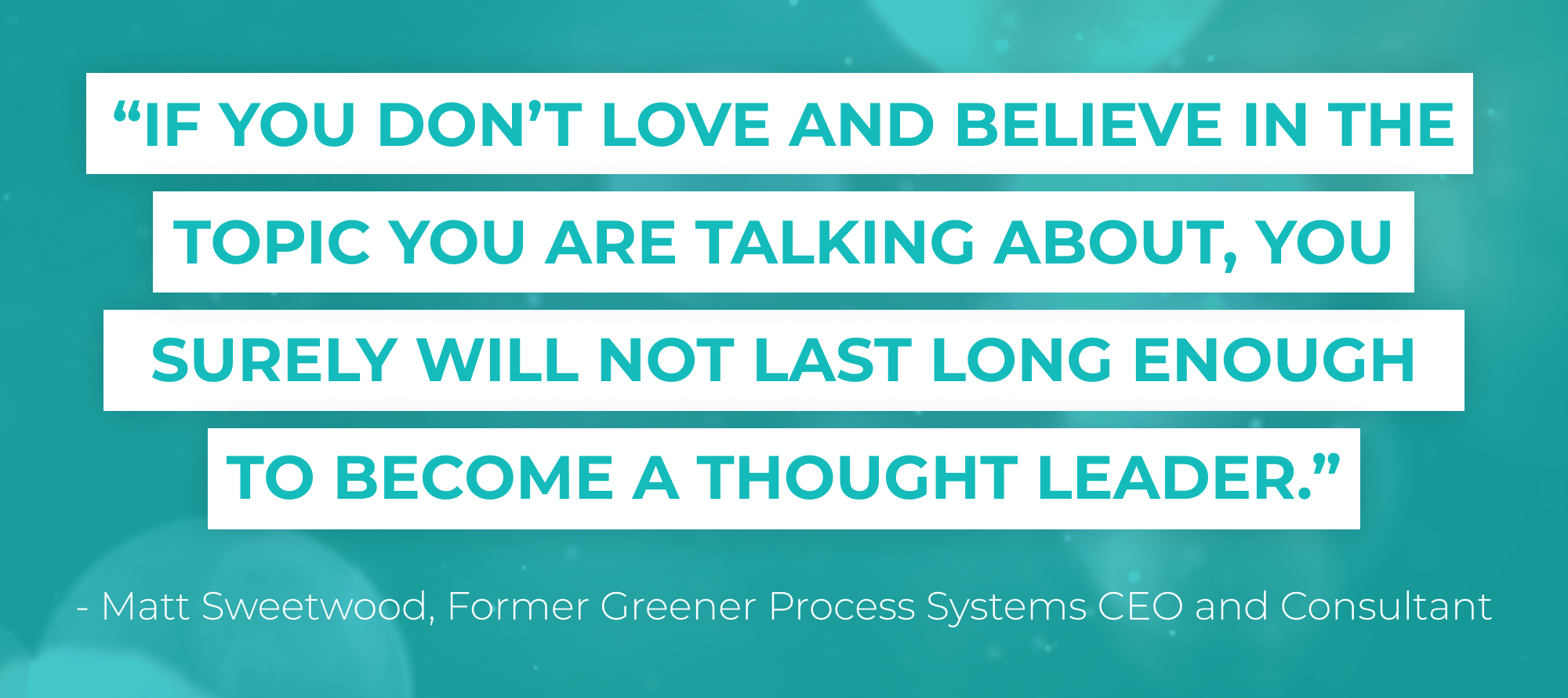
Step Back from Your Business Agenda
Thought leadership isn’t about pushing your products or services; it’s about providing valuable insights and solutions. Step back from a purely business-driven agenda and focus on contributing meaningful content. Share industry insights, trends, and solutions that showcase your expertise without the overt promotion of your brand.
Listening/Learning from Others
True thought leaders are not just speakers; they are avid listeners and learners. Engage with your audience, industry peers, and even critics. Actively seek feedback and stay attuned to emerging trends20. By embracing a culture of continuous learning and open dialogue, you not only enhance your own knowledge but also demonstrate a commitment to staying at the forefront of industry advancements.
D. Pay Attention to Employee Branding
Your healthcare brand is not just about what you offer—it’s also about the people who deliver it. A positive, renowned brand can not only help you retain an exceptional staff, but also recruit them. According to Glassdoor, 92% of employees would consider changing jobs with no salary increase if the opportunity was with a company that had an excellent brand and reputation23.
The Role of Staff in Healthcare Branding
Recognize the significant impact your staff has on the perception of your healthcare brand. 96% of companies believe employer brand and reputation can positively or negatively impact revenue24 and we’re one of them! Your staff are truly the ‘face’ of your brand. Understanding how their attitudes, behaviors, and interactions contribute to the overall brand experience, can help transform them into integral brand ambassadors.
Training and Motivating Employees
It’s important to equip your staff with the skills and motivation to embody your brand values. Consider implementing effective training strategies that align employees with your brand identity, ensuring they are not only competent in their roles but also passionate about delivering an exceptional brand experience.
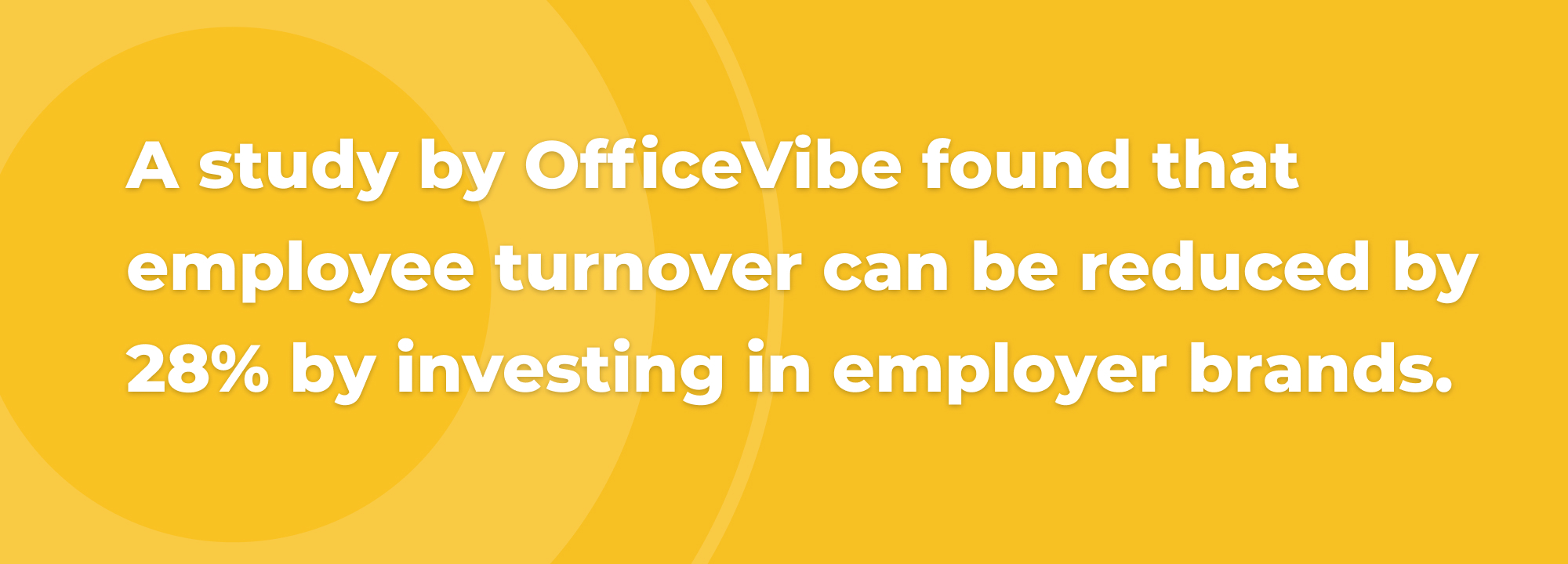
Cincinnati Children’s Hospital Medical Center instills its brand essence of uplifting hope and clinical excellence among staff through an engaging onboarding experience and ongoing development. Orientation incorporates icebreakers, patient videos and meetings with leaders summarizing every worker’s role in delivering compassionate, quality care.
Encouraging Brand Advocacy Among Staff
Instill your mission, values, and vision into the heart of your organization. Ensure there are always open lines of communication to discover what motivates your staff, and how to foster brand advocacy. By cultivating a team that passionately supports your brand, you turn employees into authentic ambassadors who contribute to the success and positive perception of your healthcare brand.
Houston Methodist institutes communication pipelines and engagement initiatives to rally employees in support of their brand. Leadership reinforces this initiative through transparent hospital forums, surveys and recognition. This culture putting all voices at the table yields a workforce steadfastly advocating the Houston Methodist brand promise within their networks. Authentic recommendations drive referrals and bolster reputation.
E. Establish a Brand Identity

Designing an aesthetically-pleasing, trustworthy brand identity is pivotal to bringing to life your brand strategy. Here are the essential elements that will help define and strengthen your brand identity:
-
-
- Create consistency – Ensure your healthcare brand speaks with one consistent voice across all platforms. Jonah Sachs, entrepreneur and author of Winning the Story Wars, reminds us that “Your brand is a story unfolding across all customer touchpoints26.” From your website to physical spaces, maintain a uniform look and feel. Consistency builds trust, making your brand instantly recognizable.
- Keep it Simple (the Logo) – When you think of Apple or Nike, their simple yet memorable logos almost instantly come to mind. Your logo is your brand’s visual anchor. Design it with simplicity and memorability in mind. Ensure it encapsulates your brand essence and resonates with your audience.
- Embrace The Psychology of Color – Studies have found that certain wavelengths of colors are able to “produce systemic physiological reactions that manifest in emotional experience27.” Taking the time to understand the psychology behind each color choice can help to create a visually compelling and emotionally resonant brand identity.
-
Radiant client, Lifescape, a functional and holistic medicine brand, uses the colors dark green and purple in their messaging which symbolize nature and healing, two values that align deeply with the brand and their goals.
-
-
- Succinct Imagery & Typography – Visual elements leave a lasting impression. Choose imagery and typography that reinforce your brand personality. For example, a font like Sans Serif or Raleway, are associated with modern-looking brands. Remember that most individuals prefer typography clean, simple, and easy to read28. There are many connotations that can be associated with the typeface used by your brand so it’s important to take notice.
-
For example, Serif are popular because they appear on screen with greater clarity than other types of fonts, making them preferable for many companies that use digital marketing strategies.
Evolution of Brand Identity
Brands evolve, and so should their identities. It’s crucial to adapt your brand identity to reflect growth, evolving solutions, and market dynamics while still maintaining a consistent visual identity.
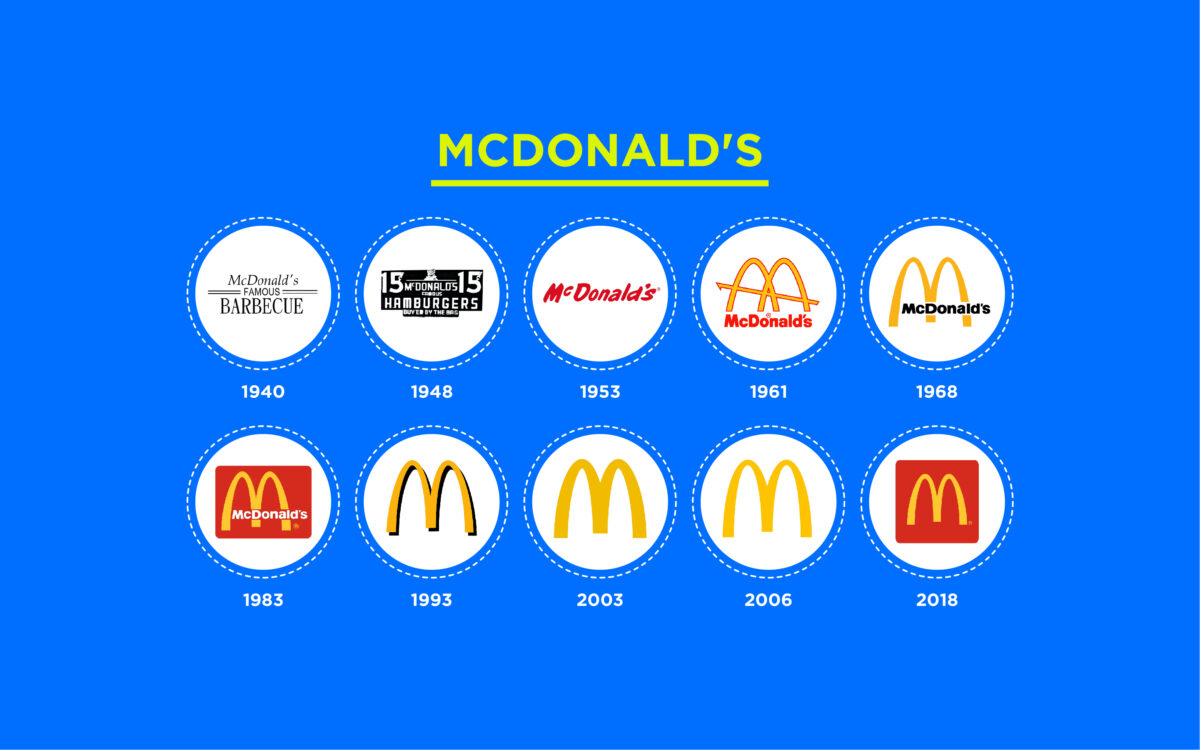
McDonald’s is a perfect example of embracing change while staying true to your core values29.
F. Online Presence and Digital Branding
In the era of digital prominence, your online presence is the face of your healthcare brand. Implement these strategies to capture attention and establish a strong and reputable digital presence within the competitive landscape of healthcare and wellness:
-
-
- A Professional-Looking/Acting Website – Elevate your brand with a professional website that not only increases awareness but also establishes trust. The average adult internet user’s attention span is 8.25 seconds so it’s vital that your site is visually appealing, simple, and easy to navigate is key to encouraging continued interaction30. A professional online presence enhances visibility and credibility, fostering a positive first impression.
- Seamless User Experience / Mobile Responsiveness – Prioritize user experience for your audience. A seamless and responsive design on both desktop and mobile devices ensures a positive interaction, contributing to user satisfaction and prolonged engagement.
-
G. Focusing on Brand Longevity
From cultivating a strong online presence to fostering trust through effective digital branding, it’s important to know the components that contribute to the longevity and impact of your healthcare brand.
H. Setting Brand Goals and Objectives
By meticulously setting goals, aligning them with strategic positioning, and implementing a measurable and adaptive approach, your healthcare brand can navigate the competitive landscape with purpose and achieve enduring success.
Market Research and Competitive Analysis
Start by conducting thorough market research and a competitive analysis. Understand the landscape of healthcare and wellness, identify key players, and assess market trends. Insights gained from this analysis will inform your brand goals and position you strategically14.
Brand Positioning
Define your unique value proposition, articulate your brand’s core message, and identify the distinct qualities that set your healthcare brand apart in the competitive market.
At Radiant, our Brand Pillar process and documentation identifies and defines these aspects of the brand, capitalizing on untapped opportunities.
Relating Objectives to Your Marketing Strategy
Align your healthcare brand objectives with a robust marketing strategy. Ensure that every goal corresponds with a specific marketing initiative. This cohesive approach ensures that your marketing efforts are purposeful and directly contribute to the achievement of overarching brand objectives.
Create Measurable Goals & Establish a Timeline
Craft goals that are measurable and time-bound. Whether it’s increasing website traffic, enhancing patient engagement, or expanding your reach, having quantifiable objectives with a defined timeline provides clarity and accountability in tracking your brand’s progress.
“While you don’t want to constantly make changes, you also don’t want to go too long with a brand and identity that isn’t resonating like you’d anticipated,” suggests Karen Cummings, Radiant CEO, “Establish a timeline and specific factors for evaluating the success of your brand strategy and where changes may be necessary.”
Balancing Aspirations with Realistic Expectations
Set ambitious goals, but balance them with realistic expectations. Acknowledge the challenges and constraints within the healthcare industry. Striking this balance ensures that your brand goals are ambitious yet achievable, fostering a sense of motivation and accomplishment.
“There is no one size fits all for determining the success of how your brand is received in the marketplace,” shares Karen, “rather you’ll want to determine these timelines and results on a case-by-case basis to identify where and when pivots should be made.”
Measuring and Evaluating Results
Implement robust measurement tools to assess the effectiveness of your brand strategy. Regularly evaluate key performance indicators (KPIs), analyze data, and adjust your approach accordingly. Measuring results allows you to refine your strategy for ongoing success.
I. Content Strategy for Healthcare Branding
In the digital age, a robust content strategy is the cornerstone of successful healthcare branding. Consider the following when strategically developing and distributing content that resonates with your audience:
Content Development and Planning
Initiate your content strategy with meticulous planning. Define the objectives, create a content development plan, establish publication schedules, and implement effective content management and governance. A well-structured content plan ensures consistency and purpose in your messaging.
Developing a Brand Voice
When it comes to brand voice, Hootsuite says it best: “Developing a unique, powerful brand voice is the best way to create consistent and compelling content across all channels31.” Whether it’s informative, empathetic, or innovative, a consistent brand voice enhances recognition and fosters a deeper connection with your audience.
Content Distribution Channels
Identify the most impactful distribution channels for your healthcare content. From social media platforms to email newsletters, select channels that align with your target audience’s preferences. Optimize your content distribution strategy to maximize reach and engagement.
Crafting Valuable Content for the Audience
Prioritize the creation of valuable and relevant content for your audience. Address their needs, concerns, and interests. Whether it’s informative articles, engaging visuals, or interactive resources, content that adds value strengthens your brand’s authority and builds trust.
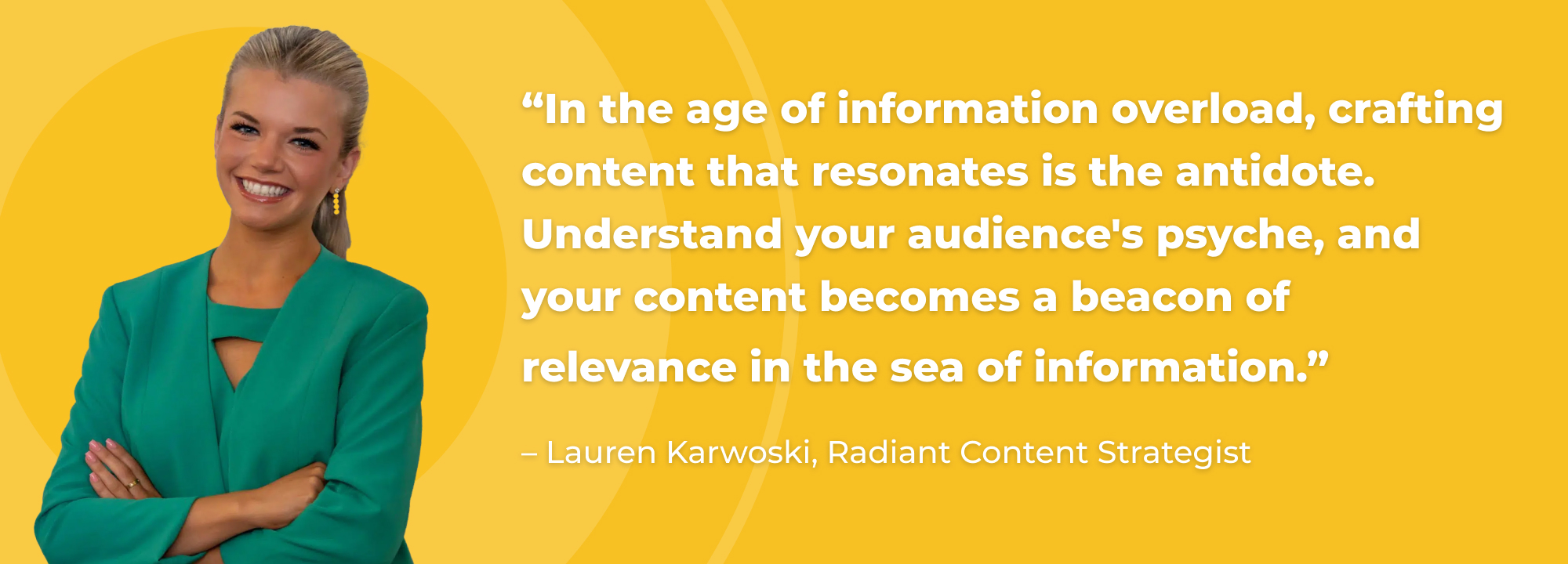
Content Calendar and Scheduling
Streamline your content creation process with a well-organized content calendar. Utilize marketing calendars to efficiently plan and schedule your content releases. A structured calendar ensures a consistent flow of content, helping you stay organized and responsive to your audience’s needs.
Social Media Branding
In today’s interconnected world, social media is a powerful tool for healthcare branding. By having an active presence on social media, you can increase patient engagement, maximize brand awareness, and foster positive relationships with your local community.32
Leverage Social Media Platforms
Identify and leverage the social media platforms most relevant to your healthcare brand. Whether it’s LinkedIn, Facebook, X, LinkedIn, Instagram, or others, each platform offers unique opportunities to connect with your audience. Tailor your approach to the strengths of each platform for maximum impact.
“Each social media platform is like a unique tribe, speaking its own dialect,” shares Lauren Karowski, Radiant Content Strategist, “Learn to speak the language, write engaging posts, fill the timeline with valuable content, and watch your brand’s vitality thrive in the online health ecosystem.”
Build a Social Media Strategy
Craft a comprehensive social media strategy that aligns with your overall brand goals. Digital Market Institute recommends starting by defining your target audience, content themes, posting schedules, and engagement tactics33. A well-structured strategy ensures consistency and purpose in your social media presence.
Engage with the Healthcare Audience
Engagement is key on social media. Foster meaningful interactions with your healthcare audience by responding to comments, addressing concerns, and actively participating in relevant discussions. Cultivate a community around your brand that values and engages with your content.
Copperstate Ob/Gyn, a Radiant client, fosters incredibly high levels of engagement with social media posts encouraging patients to share stories about their experiences and growing families.
Monitor and Analyze
Utilize monitoring tools and analytics to track the performance of your social media efforts. Analyze metrics such as engagement rates, reach, and follower growth to assess the effectiveness of your strategy. Use insights to refine your approach, ensuring continuous improvement and relevance.
By effectively leveraging social media platforms, your healthcare brand can harness the full potential of social media for lasting impact and connection within the dynamic digital landscape.
Email Marketing Branding
With a consistent brand voice, standardized elements, and integrated branding in every email, your healthcare brand can use email marketing to boost customer loyalty, increase ROI within marketing campaigns, decrease the rate at which customers unsubscribe, and further establish your brand in the eyes of your customers34.
Standardize your email elements like sender info, copy, graphics, layout, and logo. Create a simple template that follows your brand rules using sites like MailChimp. This not only looks professional but reinforces your brand with every message.
User-Generated Content in Branding
Make your patients part of your healthcare brand story. By involving patients, using their content strategically, and maintaining brand consistency, your healthcare brand can turn user-generated content into a powerful tool for building community and a positive brand image.
Encourage Sharing
Ask your patients to share their experiences. Create a friendly space for them to give feedback or share stories. Their voices make your brand more human.
Use Their Content… But Keep It Consistent
If it fits, use what your patients share—testimonials, success stories, or other content. It adds authenticity and shows the real impact of your healthcare services. While encouraging sharing, make sure it aligns with your brand. Keep an eye on the content shared to ensure it fits with your brand message, visuals, and identity. Offering guidelines helps keep things consistent.
Hot Elevation Studios, a Radiant client, frequently reshares user generated content of their workout classes on social media. It not only adds authenticity to their social channels, but also helps further convey their brand messaging of community.
J. Combining Traditional and Digital Branding Efforts
Bridge the gap between old and new. Blend traditional methods like print or TV with digital platforms. A unified approach ensures your brand is visible to a diverse audience across various channels.
Be where your customers are. Whether it’s online or offline, engage with your audience consistently. Create a unified brand presence that adapts to different channels, ensuring your customers feel connected, no matter how or when they interact with your healthcare brand.
Section 5: Benefits of Effective Branding
From building trust and fostering loyalty to amplifying brand recognition and creating advocates, effective branding can have a profound impact on your healthcare venture including:
A. Increased Trust & Loyalty
Establishing a strong brand fosters trust among your audience. Trust, in turn, cultivates customer loyalty. Patients and clients are more likely to choose and stick with a healthcare brand they trust. The epitome of brand loyalty can be seen first-hand with the long lines outside of the Apple store when a new IPhone or product drops35.
B. Enhanced Brand Advocacy and Impact
Effective branding makes an impact on customers, turning them into advocates. A well-defined brand encourages patients to share positive experiences and become ambassadors, amplifying your brand’s reach through word-of-mouth and online channels.
Radiant client, Lifescape does a fantastic job of this, by providing such a great experience for their customers, that they in turn become brand advocates, bringing numerous word-of-mouth referrals to the business.
C. Elevated Brand Recognition
On a road trip, it’s easy to spot a Starbucks from far away thanks to the iconic, easily recognizable logo that’s positioned the brand as a leader in the coffee industry. This is all thanks to effective branding and the same goes for the healthcare industry. Increased visibility contributes to a stronger presence in the market, attracting new patients and reinforcing your position in the industry.
Section 6: Auditing & Optimizing Your Brand
A brand audit can help your organization evaluate its internal and external branding through customer surveys, data analytics, and competitive review37. From ensuring consistency across channels to adapting your brand for the ever-evolving digital landscape, conducting an audit can lead to clear opportunities to implement strategic optimizations.
Evaluating the success of your healthcare branding efforts is essential for ongoing growth.
Use the following as a means to measuring and optimizing your brand performance:
A. Key Performance Indicators (KPIs)
Identify and track Key Performance Indicators (KPIs) specific to your healthcare brand. Whether it’s website traffic, social media engagement, or patient satisfaction, defining measurable KPIs provides a clear picture of your branding success and areas for improvement.
B. Tools for Branding Analytics
Leverage advanced tools for branding analytics to gain insights into your healthcare brand’s performance. Utilize platforms like Google Analytics, social media analytics, and customer feedback tools to gather data that informs strategic decisions and optimizations.
C. Competitor Analysis
Evaluate some of your competitors’ brands to see what similar companies do. Repurpose some questions you asked your target market and customers to understand more about how they respond to your competition37.
D. How To Optimize Your Brand
Explore effective strategies for optimizing your healthcare brand. From refining messaging to updating visuals, there are a number of practical steps to ensure your brand remains relevant and resonant in the ever-evolving healthcare landscape.
Boosting Audience Response – A/B Testing, Monitoring Tools
Supercharge audience engagement by employing A/B testing and monitoring tools such as HubSpot’s Kissmetrics A/B Testing Kits. A/B testing tools can test and optimize your website or app design, copy, product, and, most importantly, create an experience tailored to customer needs38. with different approaches and use tools like heat mapping to track user activity. Analyzing this data allows you to understand audience preferences and tailor your brand for maximum response.
Power of Data in Brand Optimization
Harness the power of data to drive brand optimization. Utilize analytics from testing to gain insights into user behavior, measure campaign effectiveness, and make informed decisions. Data-driven optimization ensures your healthcare brand remains agile and responsive to evolving market dynamics38.
Incorporate Regular User/Customer Feedback
Listen to your audience. Regularly gather feedback from users and customers to understand their perceptions and expectations. Incorporate this feedback into your optimization strategy, ensuring your healthcare brand aligns with the needs and preferences of your audience.
Radiant client, Copperstate Ob/Gyn, truly listens to their patients – appreciating the positive feedback and addressing the negative. For example, when they received feedback about the answering systems, they went to work improving their phone systems to more quickly address multiple incoming lines and triage patients to the appropriate individuals.
E. Public Relations in Healthcare Branding
Elevate your healthcare brand through effective public relations.
Keep it simple with these key components:
Leverage Online Reviews and Testimonials
49% of consumers trust online reviews as much as personal recommendations from friends and family39. Leverage positive online reviews and testimonials to build credibility. Encourage satisfied patients to share their experiences, contributing to a positive online reputation for your healthcare brand.
Manage and Respond to Patient Feedback
53% of consumers expect businesses to respond to negative feedback within one week40. This means that proactively managing and responding to patient feedback is key. Also, address concerns promptly and professionally, demonstrating a commitment to patient satisfaction and fostering a positive brand image.
Showcase Success Stories
Studies show that 84% of younger consumers such as millennials, don’t trust traditional advertising41, so it’s important to show and not simply tell your organization’s successes. Therefore, highlight success stories to showcase the positive impact of your healthcare services. Whether it’s patient recoveries or impactful community initiatives, sharing success stories reinforces the positive narrative of your brand.
F. Preparing for the Future of Healthcare Branding
Stay ahead by preparing your healthcare brand for the future including potential industry changes and emerging trends and innovations.
Emerging Trends and Innovations
Keep an eye on emerging trends and innovations in healthcare branding. Stay adaptable to new technologies and strategies that can enhance your brand’s relevance and impact such as advancements in telemedicine, evolving blockchain technology for secure and interoperable health records, and of course, advancements in AI for all aspects of healthcare branding.
Preparing for Industry Changes
Anticipate and prepare for changes in the healthcare industry. Whether it’s regulatory shifts or evolving patient expectations, staying proactive ensures your brand remains resilient and well-positioned for the future.
Section 7: Healthcare Branding Agencies
Whether you’re a health tech startup seeking a distinctive identity, or an established healthcare provider aiming to revitalize your brand, there are numerous advantages to collaborating with agencies that specialize in healthcare branding.
Navigating the world of branding in the healthcare industry can be complex, and partnering with the right agency can make all the difference.
A. What to Expect When Working With a Healthcare Branding Agency
When collaborating with a healthcare branding agency, anticipate a tailored approach to your brand development. Expect comprehensive strategies, creative solutions, and a deep understanding of the unique challenges within the healthcare industry.
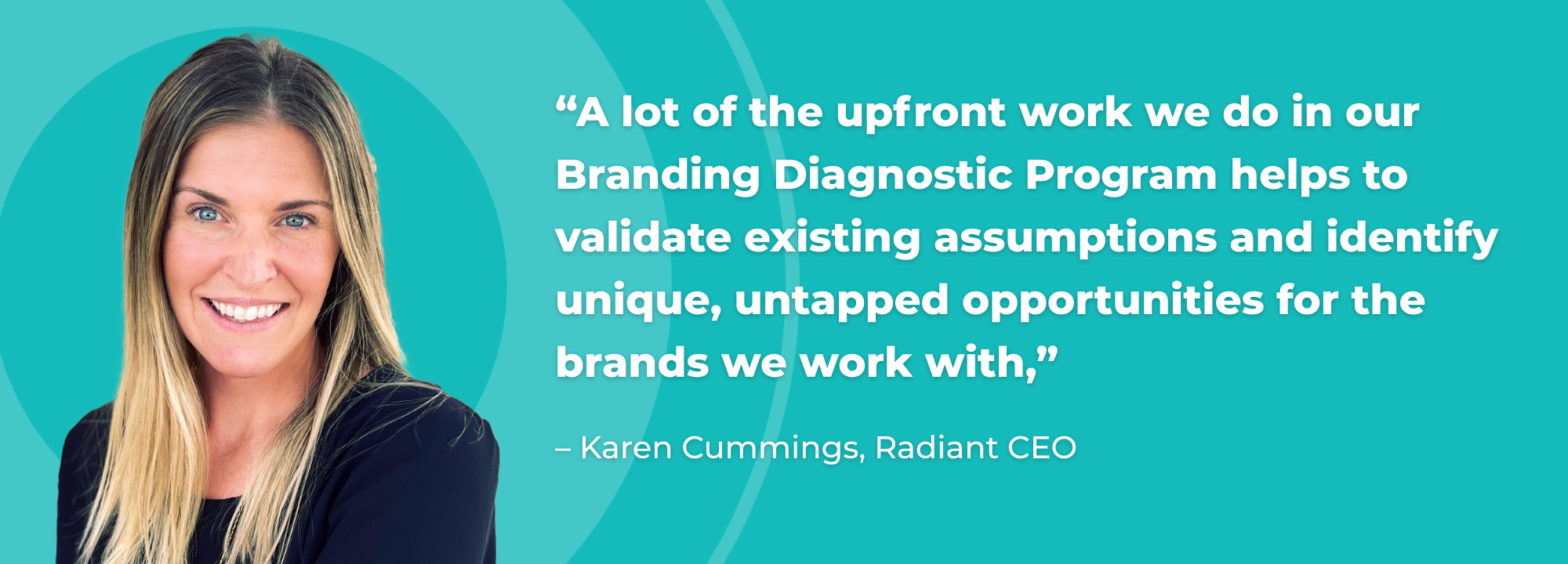
B. What To Look For When Choosing A Healthcare Branding Agency
Choose a healthcare branding agency that aligns with your values, understands the nuances of the healthcare sector, and has a proven track record. Also, look for expertise in strategic branding, a creative edge, and a commitment to delivering results.
C. What Should You Outsource and What To Keep In House
Outsource specialized tasks like brand strategy, design, and marketing campaigns to agencies with expertise. Keep core elements such as mission, vision, and overall brand direction in-house to maintain a cohesive and authentic brand identity. Above all, strike a balance that maximizes external expertise while preserving internal brand ownership.
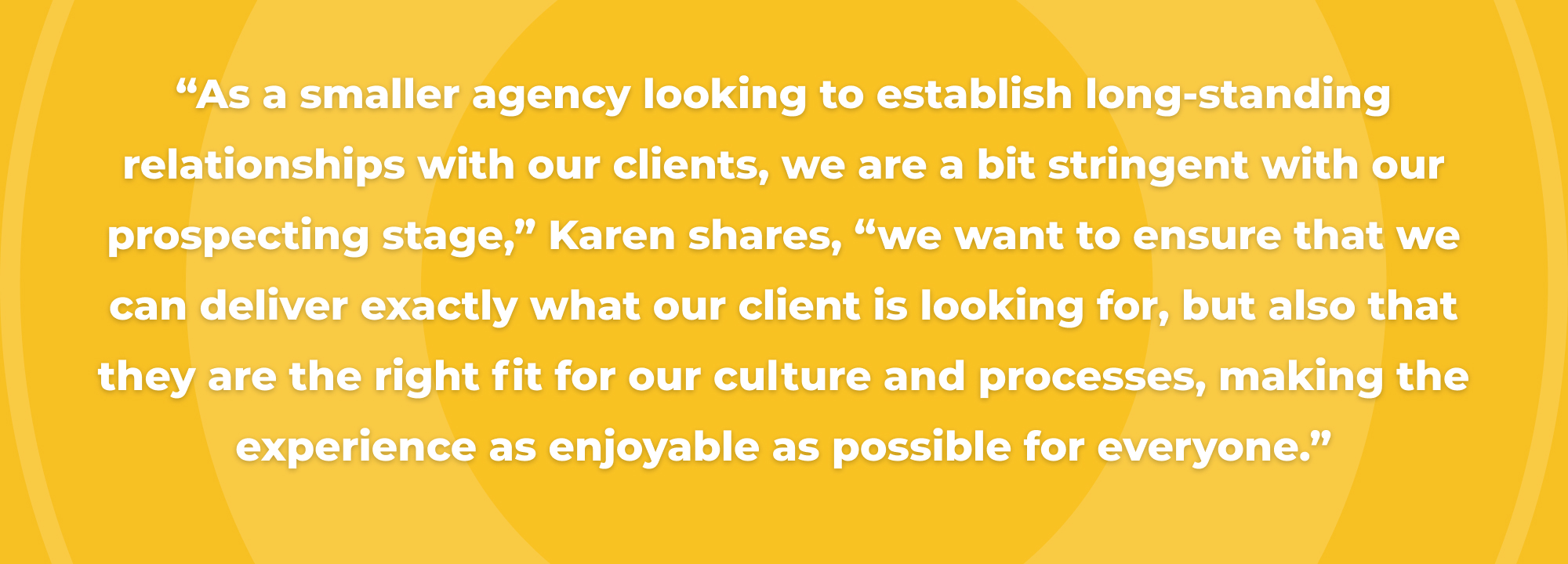
Partner with Radiant Marketing
Elevate your health and wellness brand with Radiant Marketing’s proven expertise and commitment to positive change.
Radiant Marketing exists to empower innovative health and wellness brands, bringing possibilities to life through powerful digital marketing strategies. Our comprehensive Branding, Lead Generation, Lead Progression and Sales Enablement Diagnostic Programs uncover untapped opportunities, setting a solid foundation for brand positioning and business growth.
Our Signature Programs bring to life those opportunities – executing on a strategic plan to create powerfully-positioned brands, generate new leads, or progress existing leads through the sales process, generating new and sustainable revenue for your business.
Schedule a Discovery Call
Ready to explore the possibilities for your brand? Request a discovery call today.
Our collaborative and personalized approach and proven processes ensures that your brand receives custom-tailored solutions at affordable prices.
References
-
- https://support.google.com/adspolicy/answer/176031?hl=en
- https://www.techtarget.com/searchhealthit/definition/personal-health-information
- https://www.cdc.gov/phlp/publications/topic/hipaa.html
- https://www.forbes.com/sites/forbesagencycouncil/2021/03/24/the-importance-of-branding-in-business/?sh=3d0ce1de67f7
- C.W. Park, D.J. MacInnis, J. Priester, et al., “Brand Attachment and Brand Attitude Strength: Conceptual and Empirical Differentiation of Two Critical Brand Equity Drivers,” Journal of Marketing 74, no. 6 (November 2010): 1-17; and C.W. Park, A.B. Eisingerich, and J.W. Park, “Attachment-Aversion (AA) Model of Customer-Brand Relationships,” Journal of Consumer Psychology 23, no. 2 (April 2013): 229-248.
- Dolezal L, Lyons B. Health-related shame: an affective determinant of health? Med Humanit. 2017 Dec;43(4):257-263. doi: 10.1136/medhum-2017-011186. Epub 2017 Jun 8. PMID: 28596218; PMCID: PMC5739839.
- https://pivotaladvisors.com/2022/08/02/brand-consistency-sales/
- https://nrchealth.com/patients-trust-online-reviews/
- https://hbr.org/2002/07/make-your-values-mean-something
- https://mailchimp.com/resources/5-core-brand-defining-concepts/
- https://learningleader.com/erinmeyer/
- https://blog.hubspot.com/marketing/target-audience
- https://www.imd.org/reflections/customer-analysis-marketing-plan/
- https://www.sba.gov/business-guide/plan-your-business/market-research-competitive-analysis
- Gilad, B. (2011), “Strategy without intelligence, intelligence without strategy”, Business Strategy Series, Vol. 12 No. 1, pp. 4-11. https://doi.org/10.1108/17515631111106821
- https://www.semrush.com/blog/buyer-persona/
- https://www.orbitmedia.com/blog/what-is-thought-leadership-marketing/
- https://www.semrush.com/blog/complete-guide-to-thought-leadership-for-business/
- https://blog.simplestrat.com/21-thought-leadership-quotes-every-ceo-and-marketer-should-know
- https://blog.hubspot.com/blog/tabid/6307/bid/22170/6-ways-to-establish-yourself-as-an-industry-thought-leader.aspx
- https://www.cardinaldigitalmarketing.com/healthcare-resources/blog/how-can-marketing-be-patient-centric/
- https://www.saramarberry.com/10-more-inspirational-quotes-for-healthcare-design/
- https://www.glassdoor.com/employers/resources/hr-and-recruiting-stats/
- https://www.careerarc.com/blog/employer-branding-study-infographic/
- https://workleap.com/blog/12-recruiting-stats/
- https://www.theceomagazine.com/business/marketing/best-branding-quotes/
- Elliot AJ. Color and psychological functioning: a review of theoretical and empirical work. Front Psychol. 2015 Apr 2;6:368. doi: 10.3389/fpsyg.2015.00368. PMID: 25883578; PMCID: PMC4383146.
- https://www.weare325.com/why-is-typography-important-for-your-brand/
- https://fabrikbrands.com/logo-evolution-famous-logos-that-have-changed-over-time/
- https://www.thetreetop.com/statistics/average-human-attention-span
- https://blog.hootsuite.com/brand-voice/
- https://levohealth.com/how-social-media-in-healthcare-is-changing-marketing-strategies/
- https://digitalmarketinginstitute.com/blog/social-media-strategy
- https://www.nutshell.com/blog/branding-email-marketing-strategy
- https://appleinsider.com/articles/23/09/22/apple-stores-worldwide—-including-china—-are-packed-for-iphone-15
- https://www.lifescapepremier.com/
- https://www.indeed.com/career-advice/career-development/brand-audit
- https://blog.hubspot.com/marketing/a-b-testing-tools
- https://www.brightlocal.com/research/local-consumer-review-survey/
- https://trustpulse.com/online-review-statistics/
- https://www.performancemarketingworld.com/article/1755646/84-millennials-dont-trust-traditional-advertising
